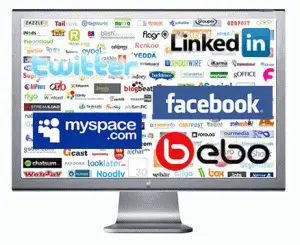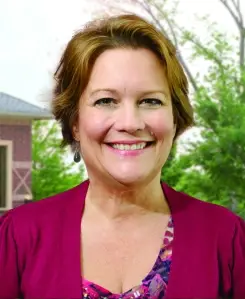
In many ways, social media such as Facebook and Twitter are more a blessing than a curse for healthcare. Just ask Cheryl Zapata, Chief Development Officer at Texas Back Institute. Each week, more and more of her professional hours are spent researching the ways social media can help the physicians and professional staff of this 36-year old practice continue to deliver world class spine care.
While many, if not most, individuals use Facebook to LIKE the latest movie or keep up with the activities of friends and YouTube to see the latest TV show or music video, a medical practice such as Texas Back Institute has more serious, long-range goals for these revolutionary communication tools.
These plans are being formulated in the context of strict adherence to patient care and privacy. While the social media objectives of Texas Back Institute are quite serious, the brilliance of these social media and the reason for their meteoric rise in popularity among almost every age group partially lies in their informal and fun presentation of vast amounts of content. In the social media world, content is indeed king.
The executive team and physicians at Texas Back Institute recognize the amazing power for health information and patient-centered care social media such as Facebook, Twitter, YouTube and blogs can deliver. There has never been a more powerful healthcare communication tool than social media as a few quick examples will suggest.
Social Media is Affecting Healthcare Now
The foundation of social media is a very powerful form of crowdsourcing. This term, coined in 2006, is defined by several online dictionaries as the practice of obtaining needed services, ideas, or content by soliciting contributions from a large group of people, and especially from an online community. It combines the efforts of “crowds” of self-identified volunteers, workers, friends on Facebook and followers on Twitter where each one on their own initiative adds a small portion that combines into a greater result.
Healthcare has many examples where the crowdsourcing aspect of social media enabled meaningful data for patient care. Epidemiology, which is the study of patterns and causes of illness and diseases among a given group, has used social media to solve healthcare mysteries in several, high profile cases.
For example, the July 18, 2013, edition of Clinical Infectious Diseases, it was noted Facebook users in Minnesota were able to identify tainted food as the source of a strep throat outbreak. The outbreak affected 18 of 63 attendees at a banquet and after seeing multiple posts about team members falling ill, a parent alerted the Minnesota Health Department which conducted phone interviews and analyzed DNA from strep samples eventually determining the source of the illness was a pasta dish at the banquet.
This was not the first case solved by social media. The Los Angeles County Department of Public Health used social media to trace an outbreak of Legionnaire’s Disease at a trade conference held at the Playboy Mansion in Los Angeles in 2011. Last year, a social media-public health company called “Sickweather” accurately predicted the 2012 flu season six months in advance of the Center for Disease Control by using social media trend tracking. Clearly, social media is already involved in the delivery of healthcare.
Building a Community with Social Media
Many physicians, hospitals, clinics and healthcare executives are extremely mindful and even concerned about inappropriate use of social media by healthcare professionals. This causes a reluctance to embrace these tools. However, the fact remains these media are already being used to positively impact patient outcomes and they may be the most powerful tools to date for the practice of medicine.

Cheryl Zapata believes when the medical practice goals and business practices of Texas Back Institute are properly aligned with social media, positive patient outcomes can occur. “The big thing social media can do for our practice is to build a community, where everyone – the patients, physicians and professional staff – is focused on patient care, pre-surgical education, preventative health practices and post-surgical therapy.”
She continued by noting, “We want our patients, our physicians and staff to be a part of something important. This community can be informed and built by timely and relevant social media content and we can glean insights about better patient care by monitoring these social media. Social media platforms are robust and extremely user friendly and it’s incumbent on us to take advantage of these communication tools.”
“We want more conversations among our physicians and patients, not less,” she noted. “And we want our physicians to be comfortable with the transparency social media affords.”
Even this blog you are reading is a part of the Texas Back Institute’s commitment to community building. “We focus considerable resources on building the ‘smart content’ in this blog which is updated every week and often several times per week. We want to be a part of the conversation our patients, physicians and staff are having. Perhaps this involves a blog post dealing “water cooler conversations” – sports injuries, news or technology – and how this topic relates to back injuries and health. If so, all the better. We want to be relevant, accurate, timely and sometime entertaining.”
Post Your Comment
Texas Back Institute has built an international reputation through its leading-edge medical advances. For example, artificial disc replacement procedures were pioneered by the physicians at Texas Back Institute and it helped introduce this technology to the U.S. This same, innovative spirit is evident in the social media plans for organization.
The next time you see a YouTube video of information about post-surgical recovery of one our patients or a blog post about the back injuries and recoveries of Major League Baseball players; don’t forget to post a comment. We want to know what you’re thinking and how we can make this community even better!


Really good place and nice and friendly